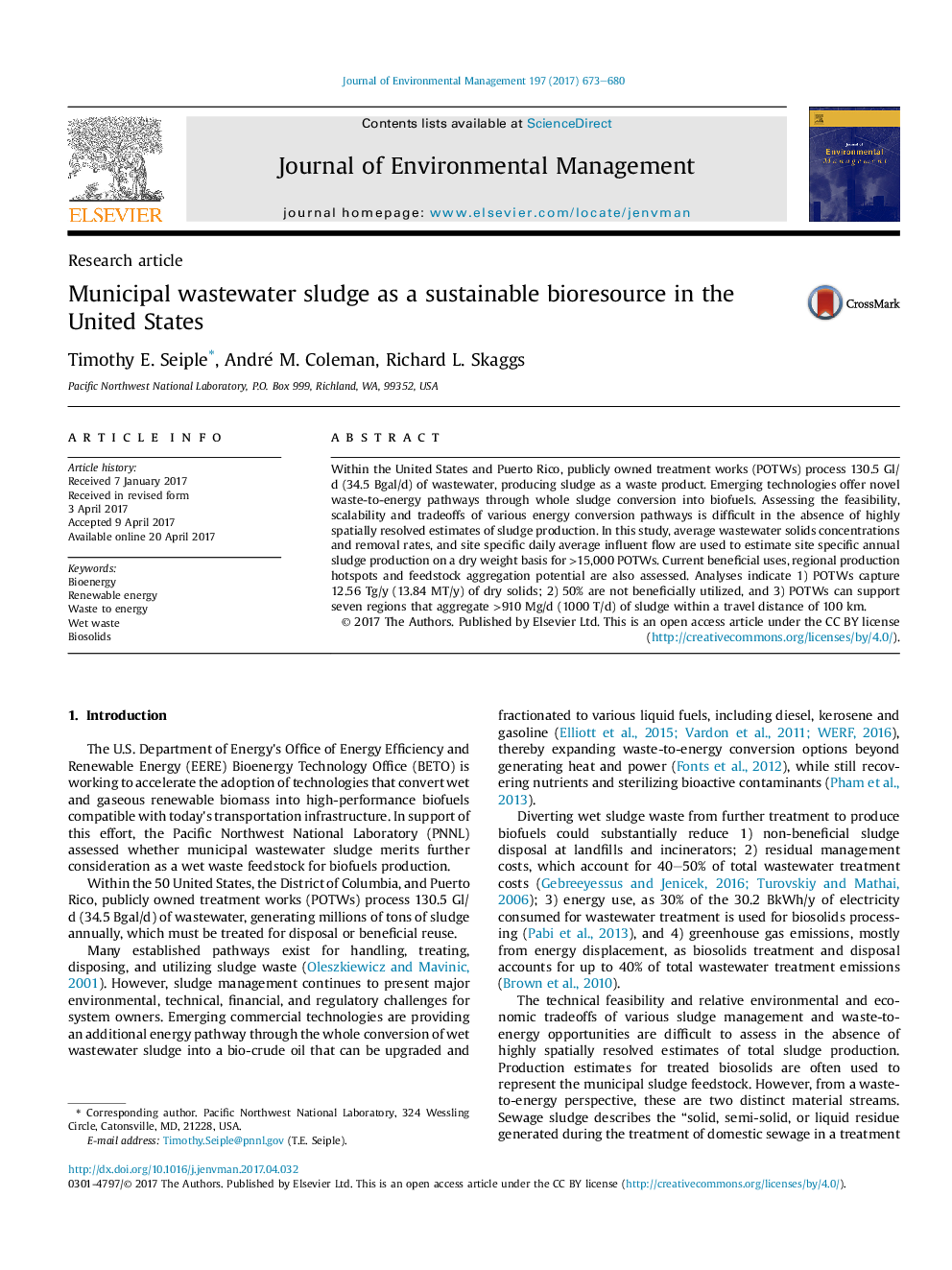| Article ID | Journal | Published Year | Pages | File Type |
|---|---|---|---|---|
| 5116990 | Journal of Environmental Management | 2017 | 8 Pages |
â¢Large scale biofuels production from wastewater sludge is tenable in the U.S.â¢15,014 U.S. POTWs treat 130.5 Gl/d (34.5 Bgal/d) of wastewater.â¢12.56 Tg/y (13.84 MT/y) of dry solids are captured during wastewater treatment.â¢50% of the total bioresource is not currently beneficially utilized.â¢Large scale feedstock aggregation is feasible in seven regions within the U.S.
Within the United States and Puerto Rico, publicly owned treatment works (POTWs) process 130.5Â Gl/d (34.5 Bgal/d) of wastewater, producing sludge as a waste product. Emerging technologies offer novel waste-to-energy pathways through whole sludge conversion into biofuels. Assessing the feasibility, scalability and tradeoffs of various energy conversion pathways is difficult in the absence of highly spatially resolved estimates of sludge production. In this study, average wastewater solids concentrations and removal rates, and site specific daily average influent flow are used to estimate site specific annual sludge production on a dry weight basis for >15,000 POTWs. Current beneficial uses, regional production hotspots and feedstock aggregation potential are also assessed. Analyses indicate 1) POTWs capture 12.56Â Tg/y (13.84Â MT/y) of dry solids; 2) 50% are not beneficially utilized, and 3) POTWs can support seven regions that aggregate >910Â Mg/d (1000Â T/d) of sludge within a travel distance of 100Â km.
Graphical abstractDownload high-res image (547KB)Download full-size image
